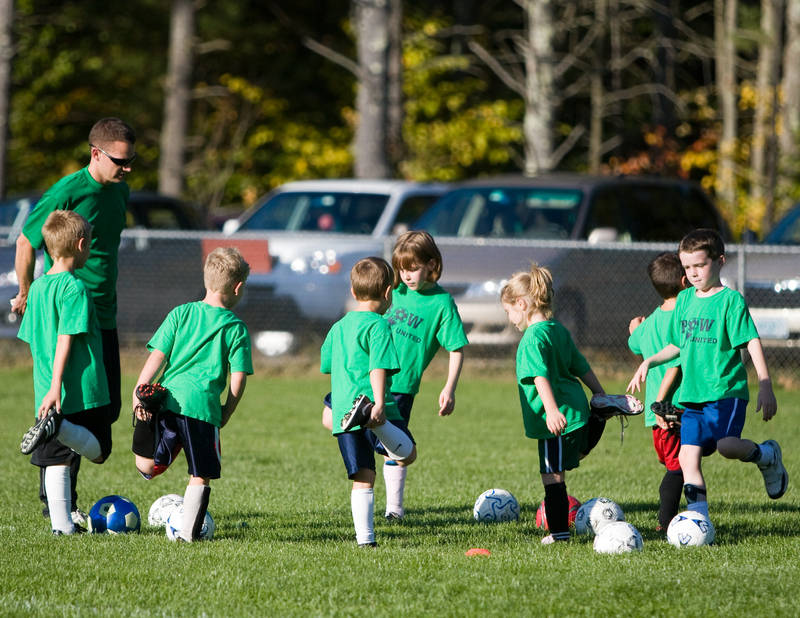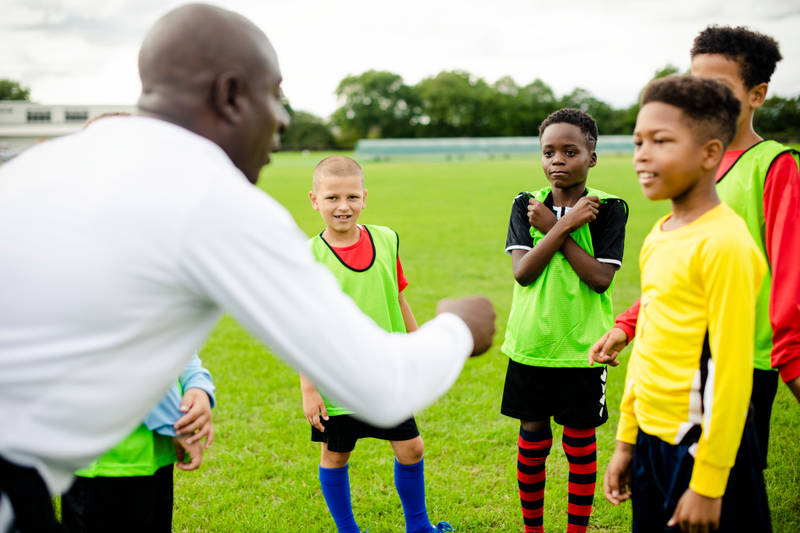Introducing children to football at the U6 level is about creating an environment where fun and basic skill development go hand in hand. These young players, typically aged 5-6 years old, are at the perfect stage to develop fundamental movement skills while experiencing the joy of the beautiful game. The primary focus of U6 football should be on fostering a love for the sport through engaging activities that simultaneously develop dribbling skills, basic coordination, and simple decision-making abilities.
In the UK's grassroots football scene, U6 sessions are designed to be playful introductions rather than structured training. Coaches use games like "Clean the Room" and "King of the Ring" to help children develop ball control in an enjoyable setting. These activities encourage young players to touch the ball frequently while improving their running, turning, and spatial awareness.
The foundation established during U6 football can significantly impact a child's long-term relationship with the sport. While some coaching approaches from soccer programmes abroad might incorporate additional technical elements, UK grassroots football emphasises creating a positive first experience that builds confidence and basic skills. Short, varied activities that keep children engaged and smiling while learning fundamental football movements provide the ideal introduction to the sport.
Understanding U6 Football
U6 football represents the first step in a young player's journey into the beautiful game. At this foundational level, the focus shifts away from competition towards creating an environment where children can develop basic motor skills and cultivate a genuine love for football.
Basics of the Game
U6 football typically involves simplified rules designed specifically for 5-6 year old children. Matches are played with smaller teams, usually 3v3 or 4v4, without goalkeepers. The pitch dimensions are reduced to approximately 20x30 yards with smaller goals.
Players at this age require plenty of ball contact, so traditional positions are not emphasised. Instead, children are encouraged to move freely and explore the space. Sessions last between 30-45 minutes, reflecting the limited attention span of young players.
Equipment is modified for safety and success—smaller, lighter footballs (size 3) are used to help children control the ball more easily. The game structure often includes short periods of play with frequent breaks to maintain engagement and energy levels.
Role of U6 Coaches
U6 coaches serve primarily as facilitators rather than traditional instructors. Their main responsibility is creating an enjoyable, safe environment where children can experience football through guided discovery and play.
Effective U6 coaches:
- Demonstrate patience and understand the developmental stage of 5-year-olds
- Use clear, simple language with brief demonstrations
- Maintain high energy to keep children engaged
- Incorporate games that develop fundamental skills
Coaches should focus on positive reinforcement and avoid criticism. Success at this level isn't measured by wins or technical precision but by children's enthusiasm to return to training. Building confidence through frequent praise and celebrating effort over outcomes creates the foundation for continued participation.
Development Goals for U6 Players
The primary development goals for U6 players centre around fundamental movement skills and basic ball familiarity. Technical perfection should never be the objective at this age.
Key development areas include:
- Motor skills - running, jumping, skipping, turning and maintaining balance
- Ball manipulation - using different parts of the foot to move the ball
- Spatial awareness - understanding personal space and boundaries
- Social skills - taking turns, following simple instructions and teamwork basics
Dribbling is the most important football-specific skill for U6 players. Activities should allow frequent ball touches with minimal waiting time. Success should be measured by engagement levels and enjoyment rather than technical execution.
Regular exposure to varied movement challenges helps develop coordination and agility, which forms the athletic foundation for more advanced skills in later years.
Organising a U6 Team
Building a successful U6 football team requires thoughtful organisation and clear communication between coaches, parents, and players. Proper structure ensures young players develop fundamental skills while enjoying their early football experiences.
Creating a U6 Squad
When creating a U6 squad, aim for balanced teams of 6-8 players. This size provides ample playing time while allowing for absences without disrupting matches.
Gender-balanced teams work well at this age, as physical differences are minimal. Consider grouping friends together to help children feel comfortable, but avoid creating skill imbalances across teams.
For match formats, 3v3 or 4v4 setups without goalkeepers are recommended. These smaller configurations maximise ball touches for each child and develop decision-making skills.
The pitch should be divided into simple "lanes" to help children understand positioning without overwhelming them. Rotate all players through different areas of the pitch rather than assigning fixed positions.
Responsibilities of Adult Members
Adult members supporting U6 teams have distinct responsibilities beyond simply attending matches. Coaches should focus on creating fun, engaging sessions with maximum ball touches for each child.
Training should incorporate the Four Corner Model, developing technical, psychological, physical and social aspects simultaneously. Sessions must remain playful whilst introducing basic concepts.
Parents require clear guidance on appropriate touchline behaviour. Encourage positive reinforcement rather than tactical instructions, which can confuse young players.
Team managers help coordinate communication, kit provision and match logistics. A WhatsApp group or similar platform helps share information efficiently.
At least one adult should receive basic first aid training, and all adults working with children must complete appropriate safeguarding checks according to local football association requirements.
Training and Techniques
Training at the U6 level focuses on creating fun, engaging experiences that develop fundamental skills and foster a love for football. Effective coaching combines physical movement, ball control exercises, and simple games that encourage creativity and decision-making.
Skill Development for U6 Players
At this age, children benefit most from activities that enhance their ball control and basic motor skills. Focus on dribbling exercises that allow players to have maximum touches on the ball. The "Clean the Room" game, where players must dribble balls from one area to another, develops control while maintaining an element of fun.
Basic turning techniques should be introduced through games like "Space Wars" where children practise changing direction. Balance and coordination exercises are essential components of development at this stage.
Remember to keep instructions simple and demonstrations clear. Young players learn primarily through visual cues rather than verbal explanations.
Incorporate activities that involve running, skipping, jumping and galloping to build overall physical literacy alongside football-specific skills.
Practice Sessions Structure
U6 practice sessions should last approximately 45 minutes, divided into short activities to maintain attention. Begin with a 5-minute warm-up featuring movement games that incorporate the ball.
Structure your sessions using the Four Corner Model, addressing:
- Technical/Tactical: Simple ball skills
- Physical: Movement coordination
- Psychological: Decision-making
- Social: Teamwork through partner activities
Middle segments should include 2-3 skill games like "King of the Ring" or "1v1 to Goal" that teach fundamentals while maintaining excitement. Each activity should last 8-10 minutes maximum.
End sessions with small-sided games that allow children to apply skills naturally. Consider 2v2 or 3v3 formats without formal positions or complex rules.
Ensure high ball-to-player ratios during training—ideally one ball per child for skill work. This maximises touches and engagement throughout the session.
Show less











